
views
X
Research source
Creating a Full Parenthetical Citation
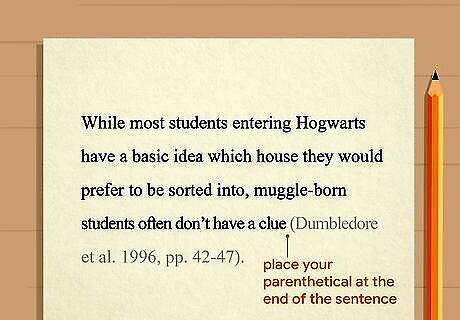
Place your parenthetical at the end of the sentence. In-text citations in your paper link to an entry in your reference list with full bibliographical information about the source. All information in your paper that comes from a source other than your own mind should have a citation attached to it. In the Harvard referencing method, this citation is included at the end of the sentence in which information from the work is mentioned. Parenthetical citations are always placed inside the closing punctuation for the sentence.
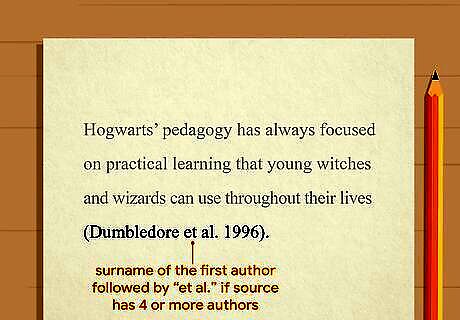
Include the surname of the first author followed by "et al." If the source you're citing has 4 or more authors, type the surname of the first author listed on the title page, followed by a space and the abbreviation "et al." Then type a space and add the year the source was published. Place the closing punctuation for the sentence outside the citation's closing parenthesis. For example, you might write: Hogwarts' pedagogy has always focused on practical learning that young witches and wizards can use throughout their lives (Dumbledore et al. 1996). Note that a period only goes after "al." This is an abbreviated form of the Latin phrase "et alia," meaning "and others."
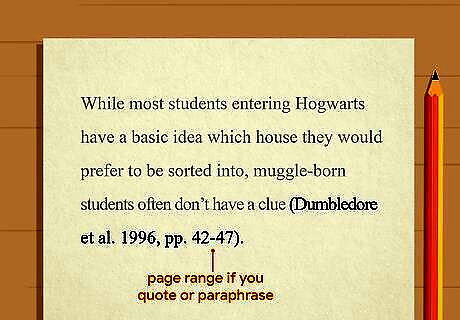
Add the page number or page range if you quote or paraphrase the source. Add a comma after the year of publication, then the abbreviation "p." (for a single page) or "pp." (for a page range). Type the pages where the information quoted or paraphrased appears (the beginning and end of a page range separated by a hyphen). Then close the citation. For example, you might write: While most students entering Hogwarts have a basic idea which house they would prefer to be sorted into, muggle-born students often don't have a clue (Dumbledore et al. 1996, pp. 42-47).Tip: Virtually the only time you don't need to include a page number in your in-text citation is when you're referring to the work as a whole.
Using the Author's Surname in Your Text
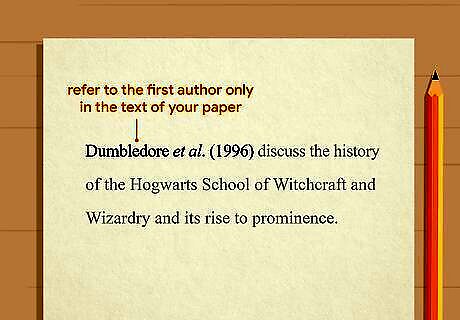
Refer to the first author only in the text of your paper. Referring to the author of a source by name in the text of your paper can enhance your paper's readability. However, it can also get cumbersome if you're referencing a work in which several people are listed as authors or editors. To make this easier, if you're referring to a work with 4 or more authors, you only have to use the name of the first author in your text, followed by the abbreviation "et al." For example, you might write: Dumbledore et al. (1996) discuss the history of the Hogwarts School of Witchcraft and Wizardry and its rise to prominence.Tip: Because the abbreviation "et al." is Latin, it should be italicized if it appears in the text of your paper.
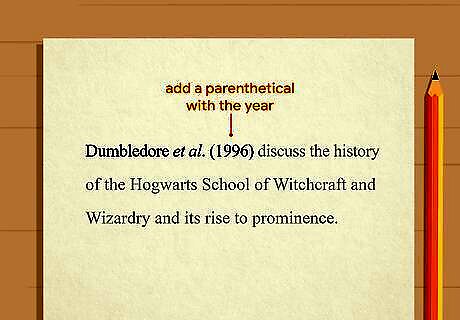
Add a parenthetical citation after the author's name with the year. If you reference the author's name in your text, the parenthetical citation goes immediately after the author's name (or in this case, after the abbreviation "et al."), not at the end of the sentence as it normally would. This can make things easier if you're referencing more than one source in the same sentence. For example, you might write: According to Dumbledore et al. (1996), a student is capable of greatness regardless of which house they're sorted into, although some houses better suit some students than others.

Include the page number or page range if quoting or paraphrasing. When paraphrasing what an author has said or quoting directly, providing the page number or page range allows your reader to find exactly the information you're discussing. Along with the year of publication, the page number or page range goes in a parenthetical after the author's name in your text — not at the end of the sentence. Place a comma after the year, then use "p." for a single page or "pp." for a range. For example, you might write: Grainger et al. (2012, p. 12) assert that it's simplistic to view specific houses as either good or evil when all of the houses could potentially produce dark witches and wizards.














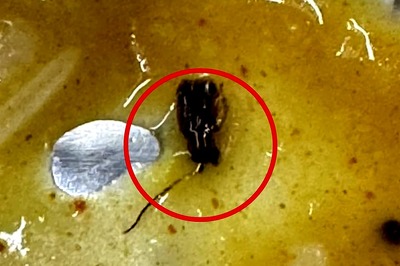




Comments
0 comment